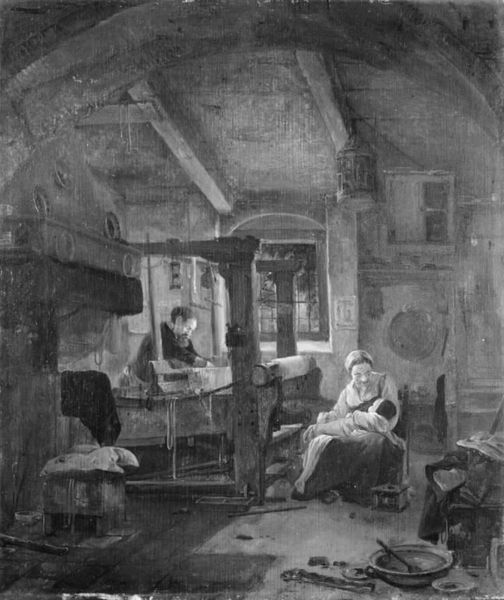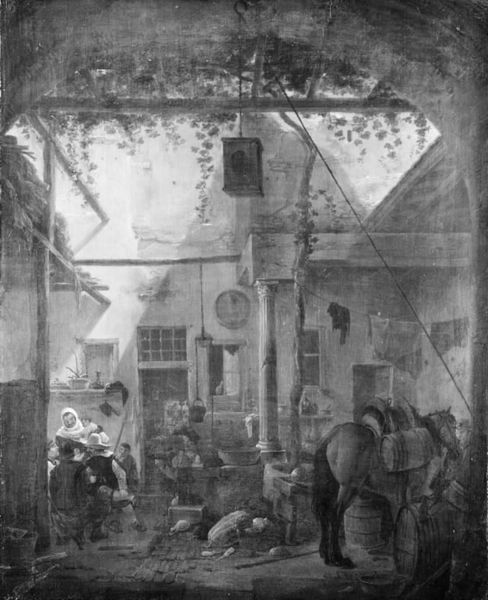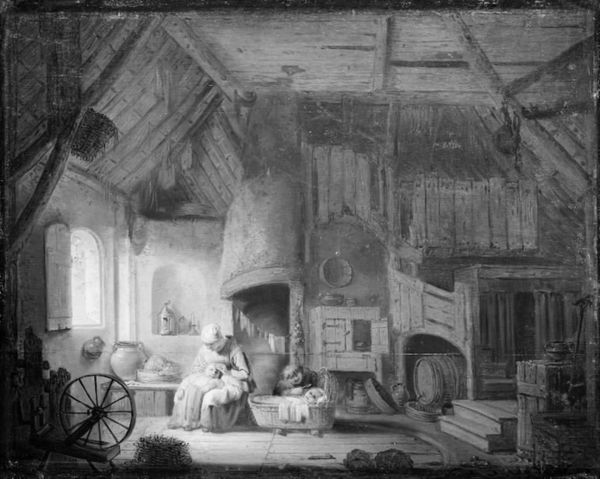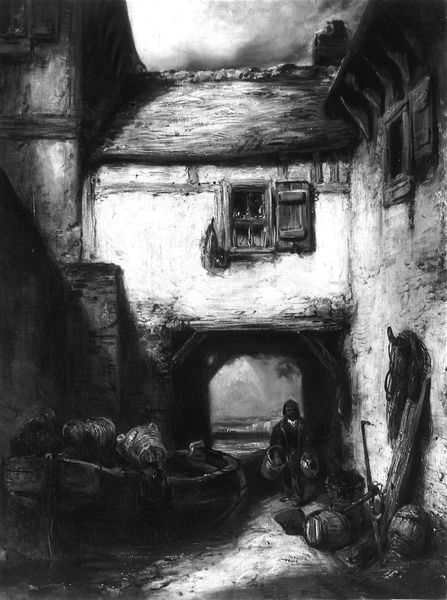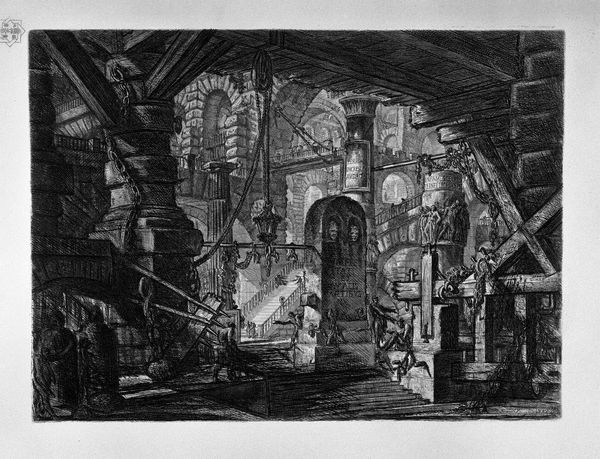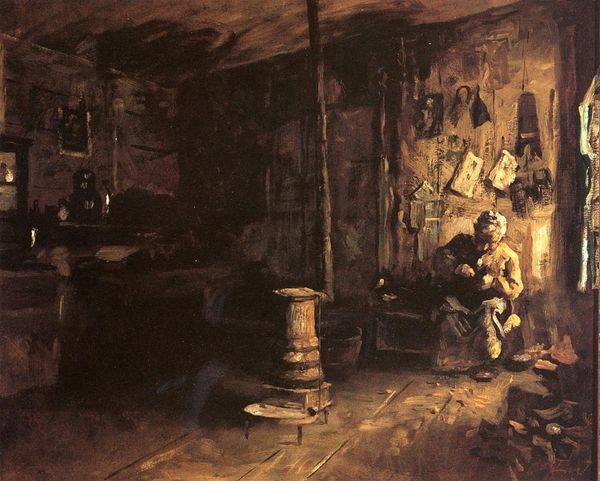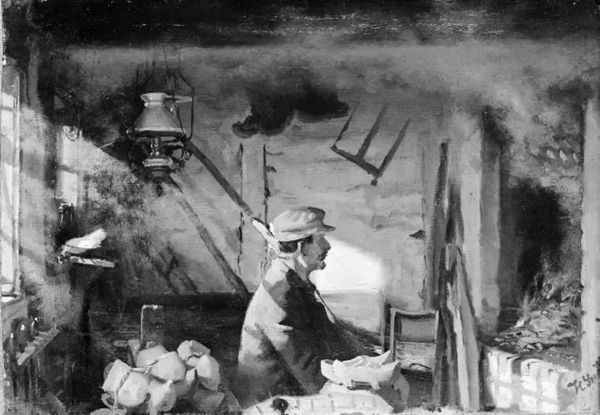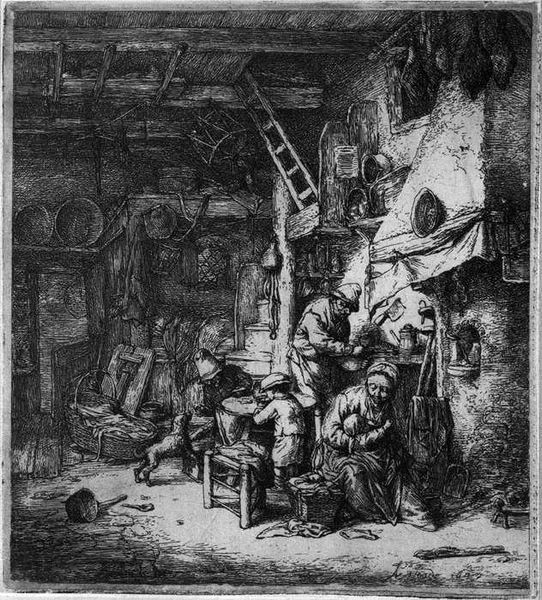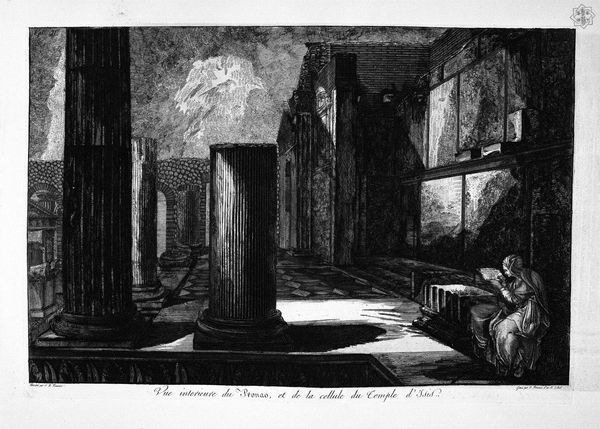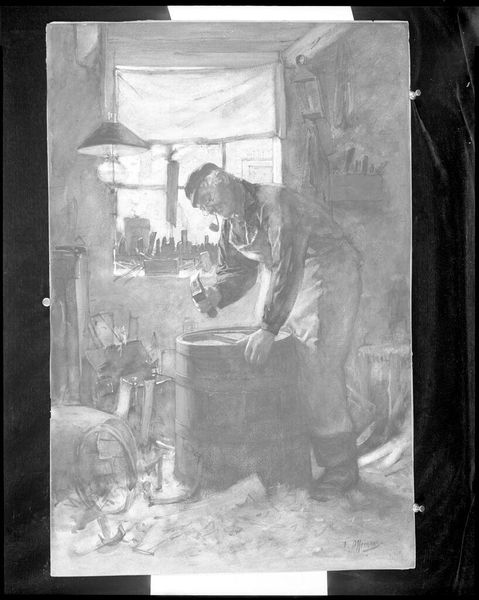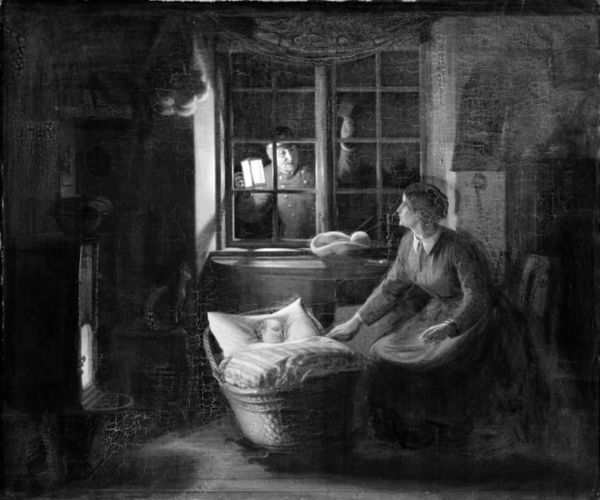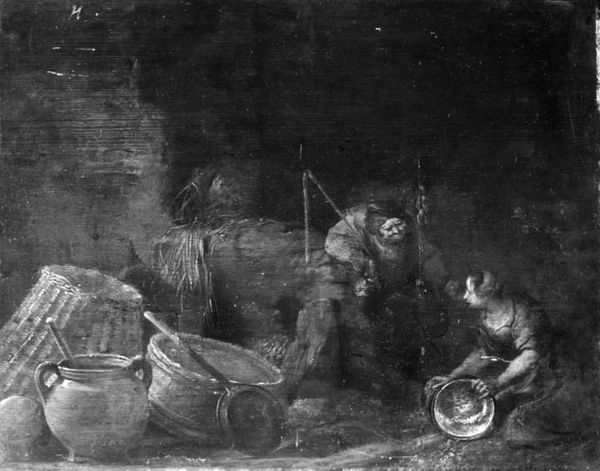
paper, canvas
#
dark place
#
abandoned
#
structure
#
sculpture
#
paper
#
canvas
#
derelict
#
sculpting
#
dark mood
#
haunting
#
bleak
#
ruin
Dimensions: 32 cm (height) x 33.5 cm (width) (Netto)
Curator: Thomas Wijck’s “The Tinker,” likely painted between 1631 and 1677, offers a glimpse into the life of a traveling repairman. The artwork, oil on canvas, is housed here at the SMK, Statens Museum for Kunst. Editor: My first impression is one of almost overwhelming darkness. The dim interior, barely illuminated, makes it feel like we are intruding on a private, perhaps even melancholic, moment. Curator: Indeed. Wijck often focused on genre scenes like this, exploring the lives of ordinary people. The prevalence of dimly lit interiors was fashionable during the Dutch Golden Age, which created opportunities to model the effects of light. This emphasis can also be interpreted as an engagement with cultural attitudes toward the poor, which, while demonstrating concern, was simultaneously accusatory. Editor: It strikes me as quite radical for its time to center someone on the margins like this. I wonder about the accessibility of work for marginalized communities. Are we invited to empathize or simply observe? I suppose the historical moment dictates how audiences are able to react to the work. Curator: His meticulous approach to everyday objects – the tools, the pots, the modest workshop itself – provides tangible insight into a specific moment and location, that helps reveal broader conditions of production. He presents the evidence that he saw as worth studying for our present-day viewing. Editor: The bleak setting amplifies his figure. It seems like the entire world presses down on this one solitary man, hard at work, as if survival itself is a heavy burden. We look at this canvas and think that it is the picture of a humble workshop, but, in fact, it may reveal just how unforgiving labour really is. Curator: What is fascinating is that these paintings functioned within a developing market economy, and not necessarily for those who looked like their subject. As we gaze into a pre-industrial world, removed from the social structures of guilds, “The Tinker” reveals the rise of market systems that offered a great deal to few, but extracted far more from many. Editor: Considering these aspects helps reframe the solitary artisan not merely as an individual laborer, but a stand-in for much broader social themes. As the world changed around people, perhaps artworks such as this were important documents to examine shifts in cultural attitudes to labour itself. Curator: Indeed. The painting encourages us to reconsider the complex interplay between the artistic vision and the realities of the period, reminding us how deeply intertwined art is with society's intricate machinery. Editor: Absolutely. Bringing in the broader context completely enriches our engagement, revealing not just what is shown but what is deliberately foregrounded and what has been necessarily overlooked.
Comments
No comments
Be the first to comment and join the conversation on the ultimate creative platform.
